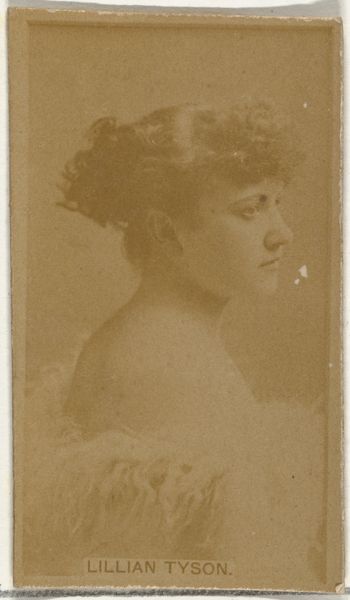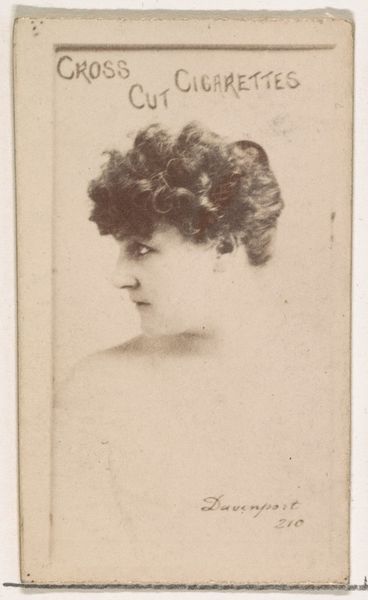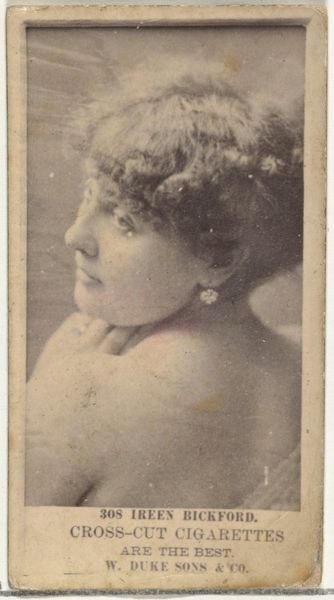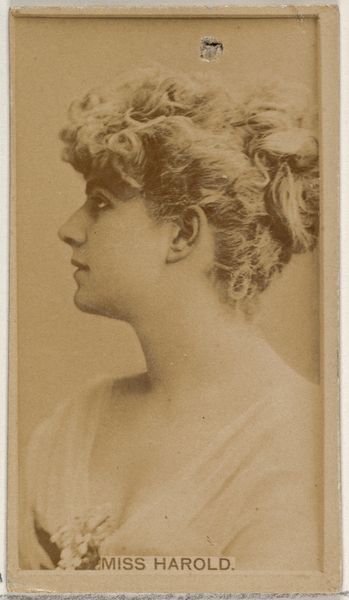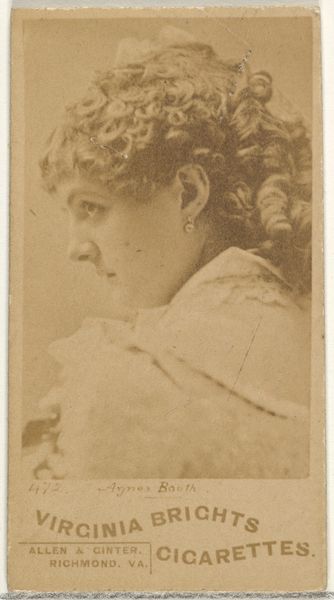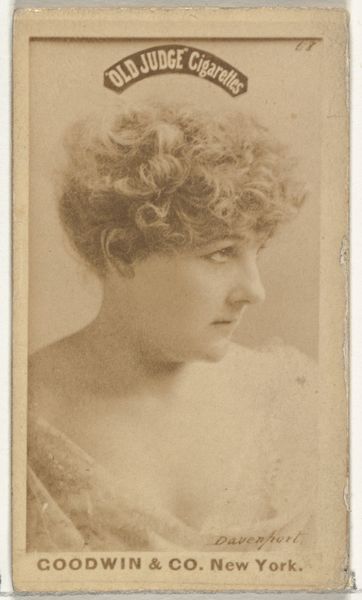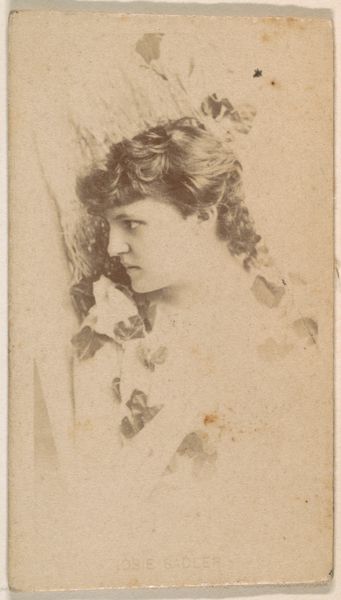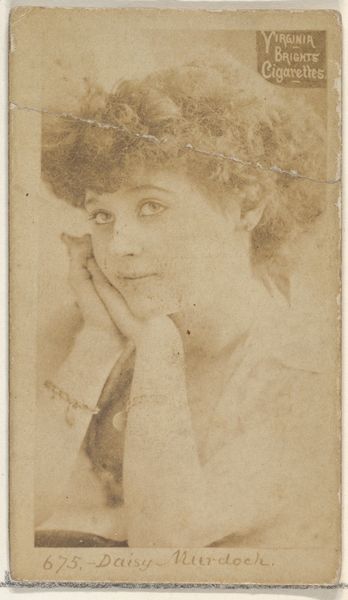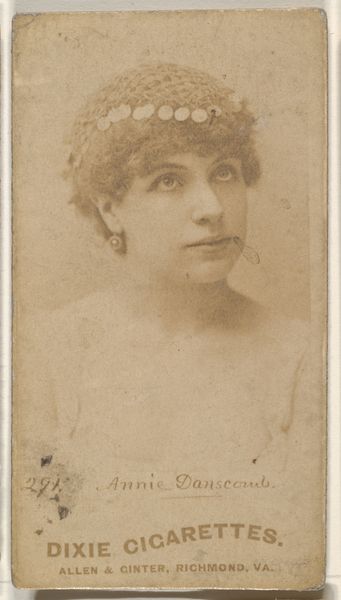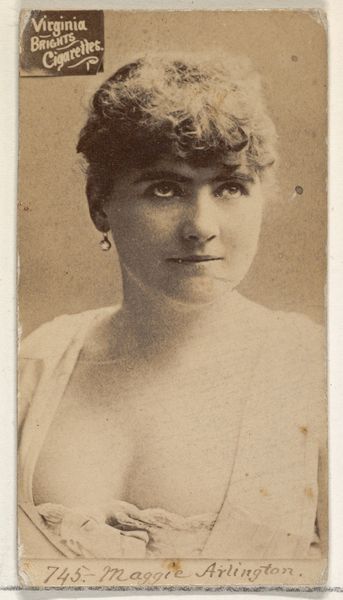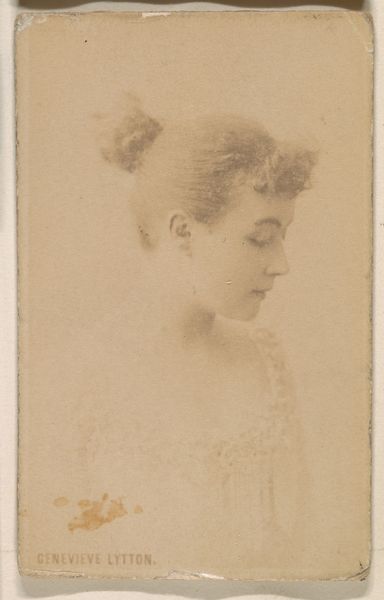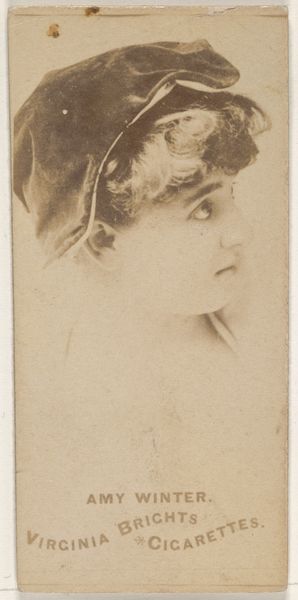
Card 428, Daisy England, from the Actors and Actresses series (N45, Type 1) for Virginia Brights Cigarettes 1885 - 1891
0:00
0:00
drawing, coloured-pencil, print, photography, albumen-print
#
portrait
#
drawing
#
coloured-pencil
# print
#
figuration
#
photography
#
coloured pencil
#
albumen-print
Dimensions: Sheet: 2 3/4 x 1 3/8 in. (7 x 3.5 cm)
Copyright: Public Domain
Curator: This is "Card 428, Daisy England" from the "Actors and Actresses" series, created by Allen & Ginter between 1885 and 1891. It’s an albumen print, originally a promotional card for Virginia Brights Cigarettes. Editor: It has such a dreamy, ethereal quality. The soft sepia tones give it an antique feel. The way Daisy is looking off to the side, with her hands clasped under her chin—there's a sense of longing, or maybe quiet contemplation. Curator: Indeed. These cards were a phenomenon. Allen & Ginter understood the rising popularity of celebrity culture, and these cigarette cards depicting actresses, athletes, and other public figures became hugely collectable. Editor: What's fascinating is how these cards participated in constructing an ideal of femininity at the time. Look at Daisy’s delicate features, her slightly averted gaze – it fits within that late-Victorian archetype of the demure, beautiful woman meant for consumption and admiration. The objectification is subtle, but there, considering it’s tied to selling cigarettes. Curator: The format itself is revealing. Mass production made these images accessible, circulating and standardizing images of beauty, while subtly associating it with consumer products and leisure. Virginia Brights used popular actresses like Daisy England to appeal to a wide audience, turning a portrait into a tool for commodity circulation. Editor: It’s important to remember the cultural context: cigarettes were marketed heavily to women around this time, associating smoking with independence and sophistication, while simultaneously, women like Daisy England were exploited for the male gaze, thus making it a multi-layered gendered artifact of this era. How passive she looks feeds into the commodification process. Curator: Exactly, and what’s brilliant about considering this work is unpacking the subtle interplay of public image, consumerism, and gender expectations, all wrapped into a small cardboard card. It serves as a historical marker that speaks volumes about that particular moment in history. Editor: I’m walking away from this, thinking about the politics of image making, especially when women’s bodies are involved. We need to critically examine how representations perpetuate cultural norms and the underlying messages about female identity. Curator: A potent reflection to consider given the context in which it was initially conceived, making one see both art and the wider world differently.
Comments
No comments
Be the first to comment and join the conversation on the ultimate creative platform.

